









Army Nurse Corps(Brief History)After
the start of WWI, the Army’s Department of Medical Relief worked with
the American Red Cross to establish base hospitals in Europe, initially
designated to serve the BEF (British Expeditionary Forces). Due to
increased needs of military nurses in the war effort, the Army Nurse
Corps increased from approximately 4,100 to 21,460 between 1917 and
1918. They served at base and evacuation hospitals in Europe as well as
transport ships, hospital trains in France and mobile surgical
hospitals stateside. The war provided an impetus for more professional
requirements, and the Army School of Nursing was opened on 25 May,
1918, setting professional standards and which later helped to provide
a viable reserve force for WWII. The authorized strength of the Army
Nurse Corps decreased to nearly 1,500 during the Interwar Period after
WWI. By 1945, the number of Army nurses reached over 57,000. Army nurses worked tirelessly during WWII, often enduring the same hardships as combat troops. Two-hundred and fifteen nurses died while bravely serving. Sixty-seven army nurses were held as Japanese prisoners of war for thirty-seven months in the Philippines after the fall of Corregidor in 1942, during which they continued to care for the wounded. Nurses played an integral role in medical advancements; access to care closer to the front lines, advanced surgical procedures and post-surgical nursing, the administration of blood products and improvements in evacuation procedures led to greatly improved survival rates. Fixed wing air evacuations moved the wounded to definitive care more quickly, and flight nursing was born. The first class of Army flight nurses to graduate was in February, 1943. With respect to civil affairs public health activities in the U.S. forces in French North Africa, two organizations were directly concerned. The first was composed of the units and officers of the Medical Department of the U.S. Army attached to the task forces at the beginning and later to the theater forces after the establishment of NATOUSA (North African Theater of Operations, U.S. Army) on 4 February 1943. The second organization was AFHQ (Allied Force Headquarters) with its Medical Section headed by British Brigadier (later Maj. Gen.) Ernest M. Cowell, RAMC, Director of Medical Services. His deputy was Col. John F. Corby, MC, USA, and the executive officer was Lt. Col. (later Col.) Earle G. G. Standlee, MC, USA. Best wishes and thank you for the work you do to remember our heroes. LTC(P) Nancy B. Cantrell Army Nurse Corps Historian AMEDD Center of History and Heritage Fort Sam Houston, Texas In 2003, Army Nurse Corps veteran Elsie F. Getz Perch, was interviewed by the Veterans History Project,
The Library of Congress. Continuing my search for veterans who served
in North Africa, I stumbled upon a U Tube clip which featured an
excerpt from that interview. As I considered an expanded search, (going
beyond the 9th Division), I thought this would be an excellent
opportunity to get a female veteran's perspective of the war in North
Africa. Elsie Perch was attached to the 105th Station Hospital, 33rd
Field Hospital. Her recollections of the war brought strong emotions as
she recalled the bitter sadness of seeing 18, and 20 year old boys
severely wounded in field hospitals that were were often bombed, and
shelled. She was stationed at: Nichols General Hospital, Louisville and
Fort Knox, Kentucky; Fort Dix, New Jersey; Ferryville, North Africa;
Rome, Anzio and Pisa, Italy. She achieved the rank of First Lieutenant.
Her WWII memoirs were also included in a book written by Katherine Anne Douglas: "Short Stories from Days Gone By: Nostalgic Tales of Simpler Times." 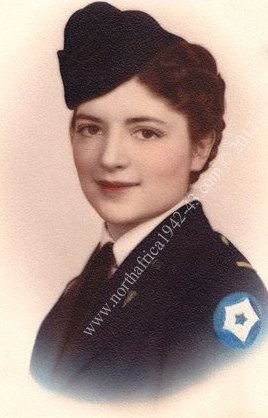 Elsie F. Getz Perch Interview (June 2009); on this particular trip I made several visits with other veterans in the Mid West. Mrs. Perch was sharp, congenial, and prepared a tasty lunch after the interview. Even after more than 60 years, she would periodically be overcome with emotion as she recalled those difficult months overseas: "We arrived at Bone on the 13th and slept on the ground near a French cemetery at Ain-Mokra, and there we set up the hospital. I worked in the surgery unit. When we treated men with shrapnel wounds, it was a nasty business. These wounds were never clean cuts. Pieces of shrapnel where multi-sided with vicious sharp teeth. I remember seeing a weary soldier who had been wounded in Tunisia. He was completely covered with fine dust from head to toe. He looked as though he had come from a coal mine. There was an unfortunate incident I'll never forget; On September 3rd one of our nurses was killed in a traffic accident. She reluctantly went on a double date with another nurse and two British officers. Apparently they had been drinking, having a good time, when the driver lost control of his Jeep and crashed." The following photos were part of Mrs. Perch's personal memorabilia taken in North Africa 1942-43 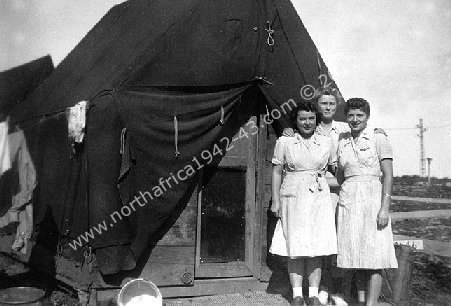 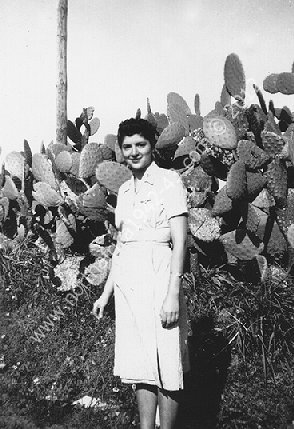 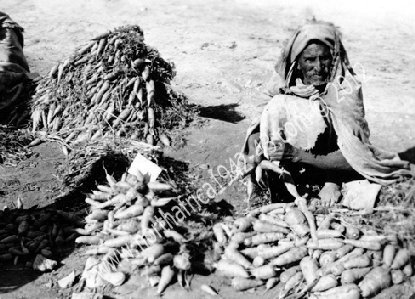 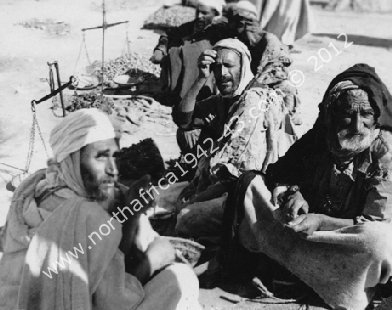 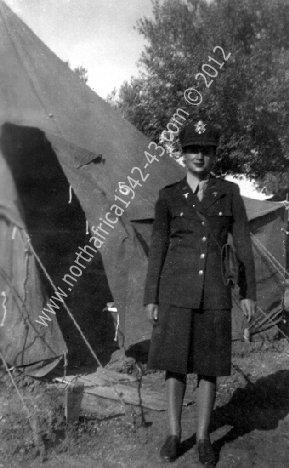 Photo taken in Bone, North Africa. This particular Army Nurse Corps dress uniform was typical for the period 1940-45. 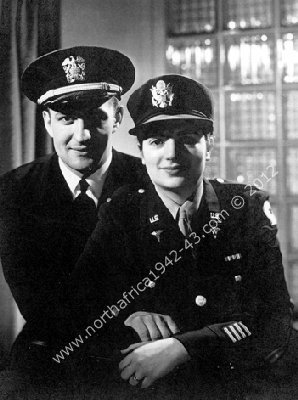 Elsie Perch and husband Dan. They conducted a long distance romance until one day Dan asked his commanding officer for a 5 day leave just before his unit was scheduled to fly a mission. After a difficult search in Tunisia, Dan finally found Elsie and they got married in 1944. This independent documentary is not intended to be a comprehensive account of the war in North Africa 1942-43. The completed film will feature rare interviews from veterans connected to the story. The search to locate veterans within this time frame was very difficult. With no funding and a small film crew who sporadically assisted with re-creations, the bulk of production falls upon one individual. Contributions of any kind are welcomed. northafricaww2survivors@gmail.com Photos, illustrations, art work or interviews may not be reproduced, copied, stored, manipulated or redistributed without the expressed permission of the author. Michael Fraticelli - North Africa 1942-43 Survivors' Stories © 2015 |
